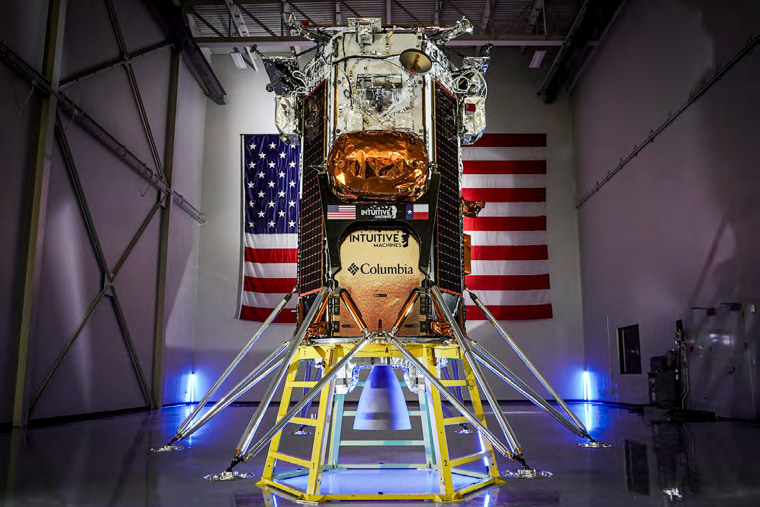A Houston-based company's planned launch of a spacecraft to the moon in a bid to become the first to land a commercially built probe on the lunar surface has been postponed.
Intuitive Machines’ spacecraft, nicknamed Odysseus, was scheduled to lift off Wednesday at 12:57 a.m. ET from Cape Canaveral, Florida. However, the launch was postponed due to "off-nominal methane temperatures prior to stepping into methane load," NASA announced shortly before launch time.
A new launch date is being targeted for Thursday at 1:05 a.m. ET.
The lander will hitch a ride into orbit atop a SpaceX Falcon 9 rocket.
Odysseus was originally set to spend the next eight days in space before it touched down on the moon on Feb. 22. The event would be the first landing on the moon for the U.S. in more than 50 years.
A separate company tried — but ultimately failed — a month ago to accomplish the same feat. That lander, built by Pittsburgh-based Astrobotic Technology, suffered a catastrophic fuel leak shortly after launch, which forced its operators to scrap the entire mission.
Astrobotic Technology and Intuitive Machines are part of NASA’s Commercial Lunar Payload Services program, which aims to spur development of moon landers by private-sector companies that NASA could eventually hire to transport cargo and scientific instruments to the lunar surface.
On the coming flight, the lander will carry a mix of commercial cargo and NASA science instruments.
Odysseus is expected to touch down near the moon's south pole, a region that has long been intriguing for scientists because water ice is thought to be relatively abundant within craters.
NASA’s Commercial Lunar Payload Services program is part of the agency’s Artemis program, which seeks to return astronauts to the moon over the next few years. NASA recently announced delays in a pair of coming Artemis missions, pushing a lunar fly-around that was to launch later this year to 2025 and postponing the first Artemis landing attempt to the following year.
NASA wants to eventually launch regular missions to the moon to build a base camp.

